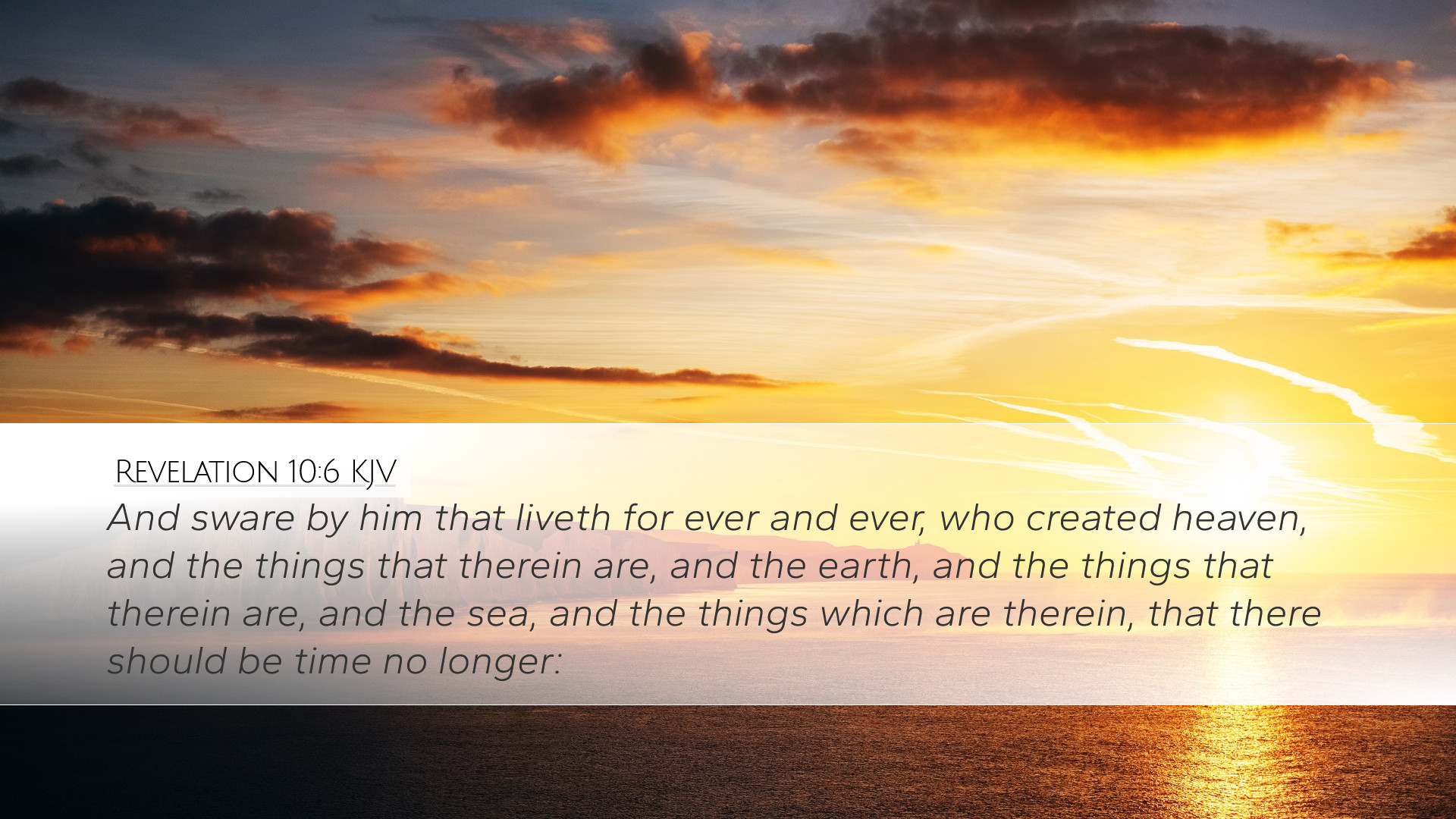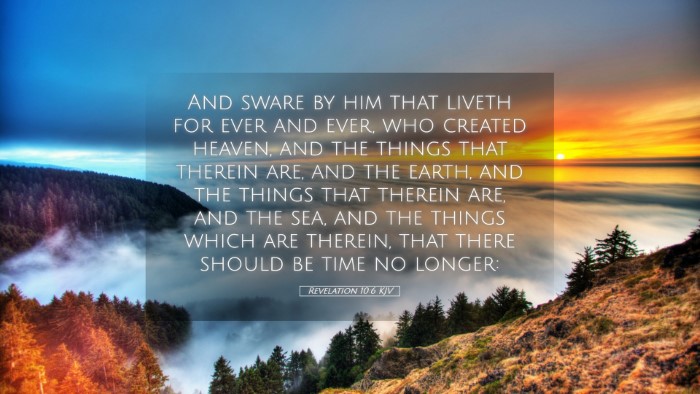Commentary on Revelation 10:6
Verse: "And swore by him that liveth for ever and ever, who created heaven, and the things that therein are, and the earth, and the things that therein are, and the sea, and the things which are therein, that there should be time no longer."
Introduction
The verse of Revelation 10:6 is rich in theological significance and imagery, encapsulating crucial elements of divine authority, the nature of creation, and eschatological themes. This commentary seeks to extract insights from several public domain commentaries, providing a holistic view for pastors, students, theologians, and Bible scholars alike.
Divine Oath and Authority
Matthew Henry emphasizes the gravity of the angel's oath and its implications for believers. Here, the angel swears by the everlasting God, underscoring the unchanging and eternal nature of the divine. This act serves as a confirmation of the truth being declared.
- This eternal God: The phrase “that liveth for ever and ever” indicates not only God's immortality but also His sovereignty over time and history.
- Importance of the Oath: Swearing by God reflects the authenticity of the message being conveyed, asserting that future events are as certain as God's existence Himself.
The Creator God
Albert Barnes notes the significance of recognizing God as the creator of the heavens and the earth. By emphasizing God's creative authority, the text situates all of creation under His ultimate sovereignty.
- Creation as a Witness: The detailed mention of heaven, earth, and sea presents a comprehensive view of creation, reminding readers that all facets of existence are under God's command.
- Theological Implications: Understanding God as Creator reinforces the belief in His power to intervene in human history, making the coming declaration of no more time particularly profound.
“Time No Longer”
Adam Clarke provides insightful commentary on the phrase "that there should be time no longer." He posits that this implies a cessation of the current order of human events and a transition into the fulfillment of God's purposes.
- Understanding Time: The phrase indicates that the specific period of waiting for God’s judgments and the establishment of His kingdom is ending, leading to the decisive and final acts of God.
- Eschatological Context: This declaration certainly resonates within the larger narrative of Revelation, which speaks of ultimate judgment and the consummation of all things.
Theological Reflections
This verse invites profound theological reflection on the nature of God's timeline versus human perception of time. While humanity is bound by the constraints of time, God exists outside of time, orchestrating history toward His divine purposes.
- A Call to Vigilance: For believers, this verse serves as a reminder of the urgency to remain steadfast and vigilant, understanding that God's timetable does not conform to human expectations.
- Hope of Fulfillment: The promise that “time shall be no longer” offers comfort and hope, signifying that God’s promises will culminate in the fulfillment of His kingdom on earth.
Practical Applications
As we glean insights from Revelation 10:6, both scholars and laypersons may find several practical applications for faith and ministry.
- Awareness of God’s Sovereignty: Emphasizing God’s ultimate authority and the certainty of His promises can bolster faith amidst uncertainty, reminding communities of the divine plan in unfolding history.
- Encouragement for Mission: Understanding that time is limited calls believers to engage fervently in ministry, echoing the urgency of the Great Commission with renewed vigor.
- Communal Reflection: This passage invites congregations to gather for discernment, prayer, and reflection on God’s intentions for their lives and communities.
Conclusion
Revelation 10:6 stands as a powerful pronouncement of God's eternal nature, creative authority, and the shifting sands of time as it relates to divine intervention. With insights drawn from various public domain commentaries, we can appreciate the depth of this scripture and its implications for understanding God's ultimate plan for humanity.


